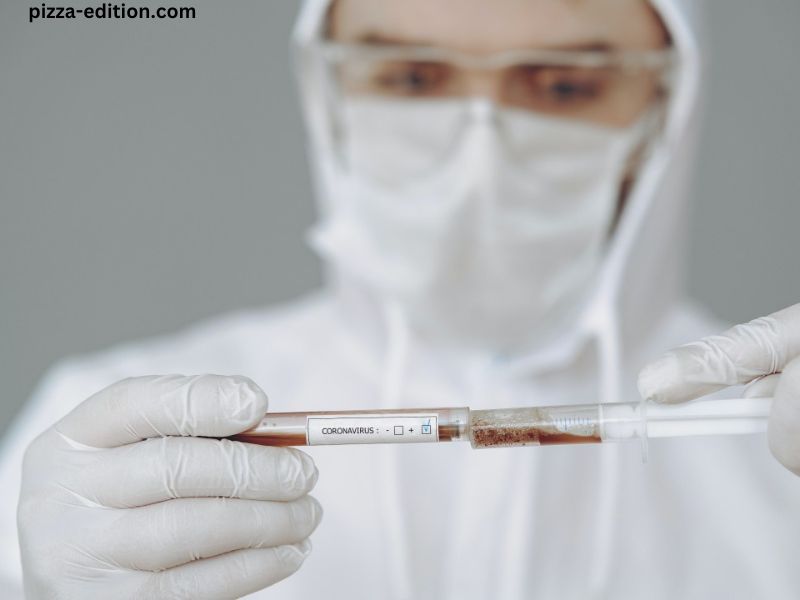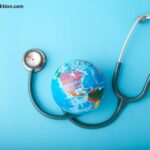hogensIn the healthcare industry, professionals are exposed to various risks, including the potential transmission of bloodborne pathogens. These infectious microorganisms, such as viruses and bacteria, can be found in human blood and other bodily fluids, posing a significant threat to healthcare workers. Understanding the nature of these pathogens and the associated risks is crucial for ensuring the safety of both healthcare personnel and patients.
Bloodborne pathogens are a group of viruses and bacteria that can be transmitted through exposure to contaminated blood or other bodily fluids. Some of the most common bloodborne pathogens include the human immunodeficiency virus (HIV), hepatitis B virus (HBV), and hepatitis C virus (HCV). These pathogens can cause serious and potentially life-threatening illnesses if contracted.
Understanding the Risks of Exposure for Healthcare Workers
Healthcare workers are at an increased risk of exposure to bloodborne pathogens due to the nature of their work. Occupational exposure can occur through various routes, such as needlestick injuries, cuts from sharp instruments, contact with contaminated surfaces, or exposure to infectious materials during medical procedures.
The risk of exposure is not limited to healthcare professionals directly involved in patient care. Support staff, laboratory personnel, and even housekeeping staff can also be at risk if they come into contact with contaminated materials or surfaces.
The Most Common Risk of Exposure to Bloodborne Pathogens
While there are several potential routes of exposure, the most common risk for healthcare workers is needlestick injuries. These injuries occur when a needle or other sharp object accidentally punctures the skin, potentially exposing the healthcare worker to bloodborne pathogens present in the patient’s blood or bodily fluids.
According to the Centers for Disease Control and Prevention (CDC), needlestick injuries account for a significant portion of occupational exposures to bloodborne pathogens in healthcare settings. These injuries can occur during various medical procedures, such as drawing blood, administering injections, or handling contaminated sharps.
How Bloodborne Pathogens are Transmitted in Healthcare Settings
Bloodborne pathogens can be transmitted in healthcare settings through various routes, including:
- Percutaneous exposure:
- Needlestick injuries
- Cuts or punctures from sharp instruments contaminated with infectious materials
- Mucosal exposure:
- Splashes of blood or other potentially infectious materials into the eyes, nose, or mouth
- Non-intact skin exposure:
- Contact with blood or other potentially infectious materials on open wounds, cuts, or abrasions
- Indirect transmission:
- Contact with contaminated surfaces or equipment
It is essential for healthcare workers to understand these transmission routes and take appropriate precautions to minimize the risk of exposure.
Prevention Measures for Healthcare Workers
Preventing exposure to bloodborne pathogens is a top priority in healthcare settings. Several measures can be implemented to reduce the risk of transmission, including:
- Standard Precautions:
- Treating all blood and bodily fluids as potentially infectious
- Practicing proper hand hygiene
- Using personal protective equipment (PPE) appropriately
- Engineering Controls:
- Using safety-engineered devices, such as needleless systems and sharps with injury protection features
- Proper handling and disposal of contaminated sharps and materials
- Work Practice Controls:
- Avoiding recapping needles
- Properly handling and disposing of contaminated materials
- Implementing safe injection practices
- Administrative Controls:
- Providing comprehensive training and education programs
- Establishing exposure control plans and procedures
- Ensuring proper labeling and signage for biohazardous materials
Importance of Personal Protective Equipment (PPE)
Personal protective equipment (PPE) plays a crucial role in preventing exposure to bloodborne pathogens. PPE includes items such as gloves, gowns, masks, and eye protection. Proper selection, use, and disposal of PPE are essential for maintaining a safe work environment.
Healthcare workers should be trained on the appropriate use of PPE and follow established protocols for donning and doffing PPE to minimize the risk of contamination. PPE should be readily available and easily accessible in all areas where potential exposure may occur.
Training and Education for Healthcare Workers
Comprehensive training and education programs are vital for ensuring that healthcare workers understand the risks associated with bloodborne pathogens and the necessary precautions to minimize exposure. These programs should cover topics such as:
- Identifying and understanding bloodborne pathogens
- Recognizing potential exposure situations
- Proper use of personal protective equipment (PPE)
- Safe handling and disposal of contaminated materials
- Exposure control plans and procedures
- Reporting and managing exposure incidents
Regular training and refresher courses should be provided to ensure that healthcare workers remain up-to-date with the latest guidelines and best practices.
The Role of Healthcare Facilities in Reducing Exposure Risks
Healthcare facilities play a crucial role in reducing the risks of exposure to bloodborne pathogens. They should implement comprehensive exposure control plans and establish policies and procedures to protect healthcare workers and patients. These measures may include:
- Conducting risk assessments:
- Identifying potential exposure hazards
- Evaluating the effectiveness of existing control measures
- Providing appropriate resources:
- Ensuring access to PPE, safety-engineered devices, and other necessary equipment
- Maintaining adequate staffing levels to prevent overwork and fatigue
- Establishing reporting and follow-up procedures:
- Implementing systems for reporting and documenting exposure incidents
- Providing post-exposure management and follow-up care
- Promoting a culture of safety:
- Encouraging open communication and feedback from healthcare workers
- Fostering a supportive environment for reporting concerns or incidents
Reporting and Managing Exposure Incidents
Despite preventive measures, exposure incidents may still occur in healthcare settings. It is crucial to have established protocols for reporting and managing these incidents promptly and effectively.
Healthcare workers should be trained on the proper procedures for reporting exposure incidents, including who to notify and what information to provide. Facilities should have designated personnel responsible for managing exposure incidents, conducting risk assessments, and coordinating follow-up care and testing as needed.
Prompt reporting and appropriate management of exposure incidents can help minimize the potential consequences and ensure that necessary steps are taken to protect the healthcare worker’s health and well-being.
Conclusion
Exposure to bloodborne pathogens is a significant occupational hazard for healthcare workers. While needlestick injuries are the most common risk, other routes of exposure, such as mucosal or non-intact skin contact, can also occur. Implementing comprehensive prevention measures, including the use of personal protective equipment, engineering controls, and administrative controls, is essential for reducing the risk of transmission.
Healthcare facilities play a crucial role in providing a safe work environment by establishing exposure control plans, providing resources and training, and promoting a culture of safety. Prompt reporting and management of exposure incidents are vital for minimizing potential consequences and protecting the health of healthcare workers.
Remember, protecting yourself from bloodborne pathogens is not only a personal responsibility but also a collective effort within the healthcare community. By adhering to established protocols and guidelines, you can help create a safer work environment for yourself and those around you.
To learn more about protecting yourself from bloodborne pathogens and ensuring a safe work environment, consider enrolling in our comprehensive training program. Our courses cover the latest guidelines, best practices, and hands-on scenarios to equip you with the knowledge and skills needed to minimize exposure risks. Visit our website or contact us today to explore our training offerings and take the first step towards a safer healthcare career.




